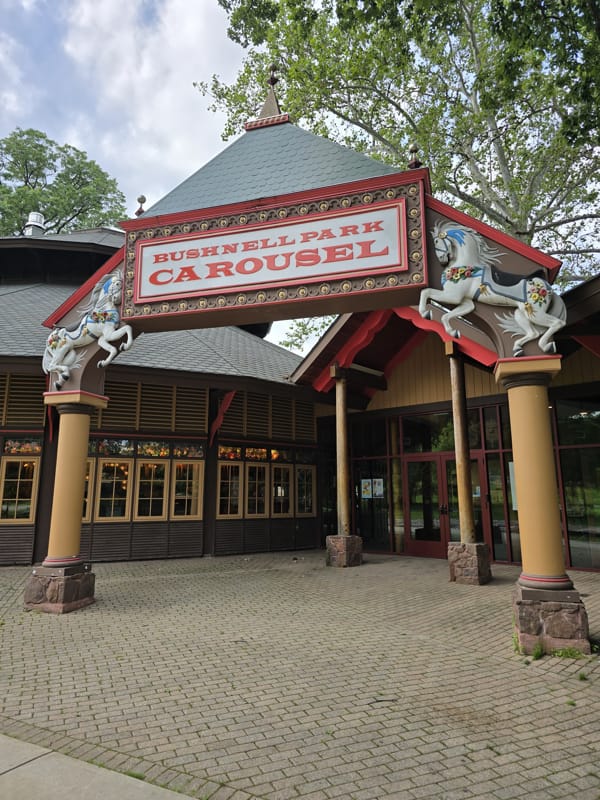A Half-Day Trip to Hartford
(Translated from the Chinese version with the help of Claude.)
Last weekend I took a half-day trip to Hartford, the capital of Connecticut. Here’s a stream-of-consciousness record with photos.
The Insurance Capital of the World
There really are quite a few insurance companies here, such as United Healthcare, Aetna, Travelers, and others. When I was working at Oracle and applied for paternity leave, the company said I needed to contact “The Hartford” - this insurance company is (obviously) headquartered in Hartford.

Logo is a stag, very recognizable
Connecticut Science Center
The funniest moment of the entire day: Here they stamp your hand for admission tickets. Midway through, I went back to my car to get something, and when re-entering, I walked in while raising my right fist with the back of my hand facing the ticket checker, making eye contact to show I’d already bought a ticket. He wasn’t looking at me, and I was getting embarrassed and about to lower my hand when he suddenly looked up, saw me with my fist raised and eyes expectant, paused for 0.5 seconds, then gave me a fist bump and enthusiastically said “what’s up bro.” I was completely thrown off, so I just went with it and replied “how are you doing.” He probably thought, “Why is this Chinese guy raising his fist? Does he want to fight?”
But I digress - back to the exhibition. My kid really enjoyed the water play area on the first floor, but the highlight of the entire museum was the second-floor Pixar-themed exhibition, which detailed the animation production process.
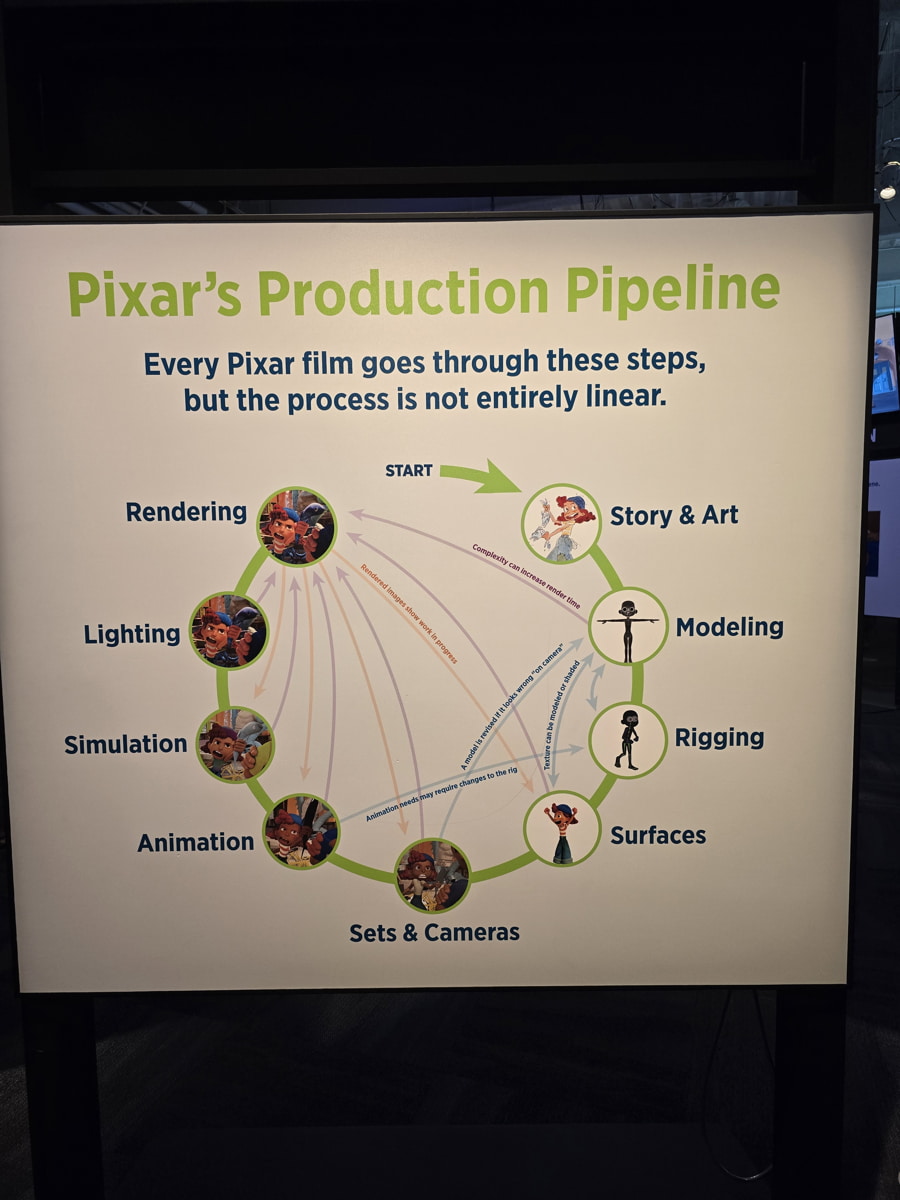
Pixar animation production pipeline
The most unfamiliar part was “rigging,” which means adding a “skeleton” to the model based on character design, defining which parts can move and which are fixed when the model performs actions - for example, how arms bend and swing, how facial muscles, eyebrows, and eyelids move when making expressions. The person who does this work is called a “rigger” - quite interesting.
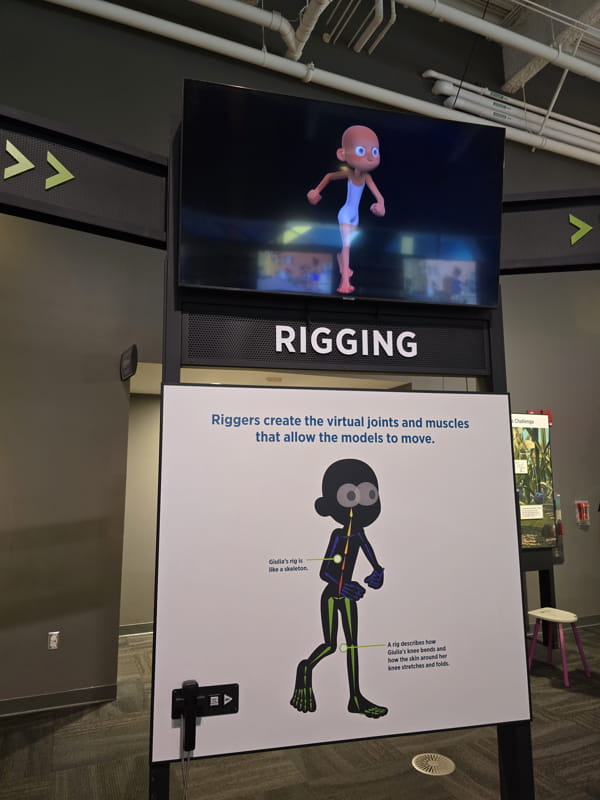
Rigging
Old State House
Completed in 1796. When we visited, it was already closed, so we could only take photos around the perimeter, but we still learned a few lessons.
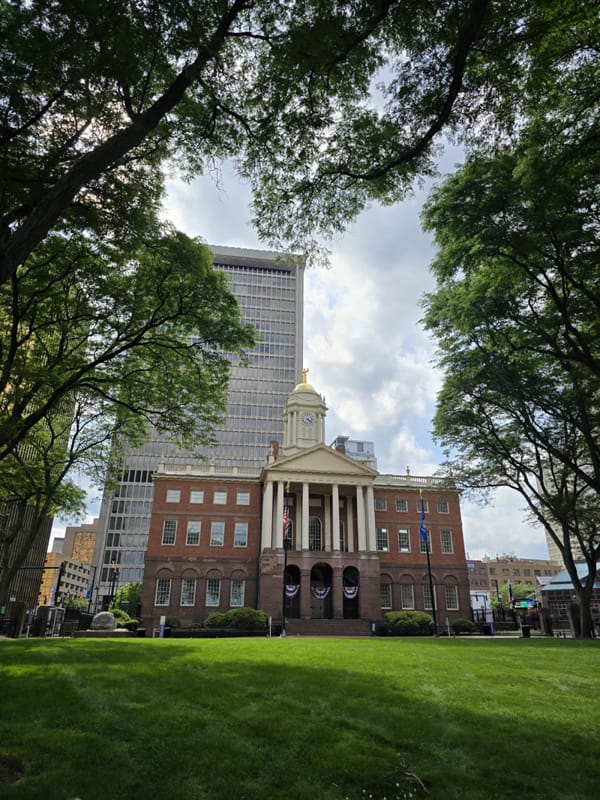
Old State House front view

Justice at the top, blindfolded and holding scales
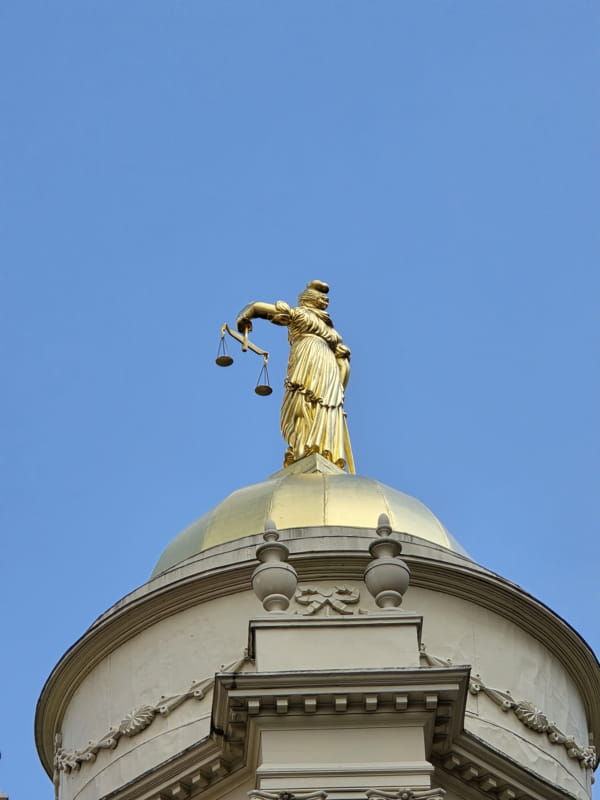
From behind, you can see she's also holding a sword in her right hand
Inside the railing, we found a statue facing away from us. Looking at the side inscription, it read “Leading his people through the wilderness, he founded Hartford in June 1636.” I quickly took a commemorative photo. After researching at home, it’s Thomas Hooker, who disagreed with Puritan leaders in Massachusetts colony, led his supporters away, and established Hartford and Connecticut. Respect.
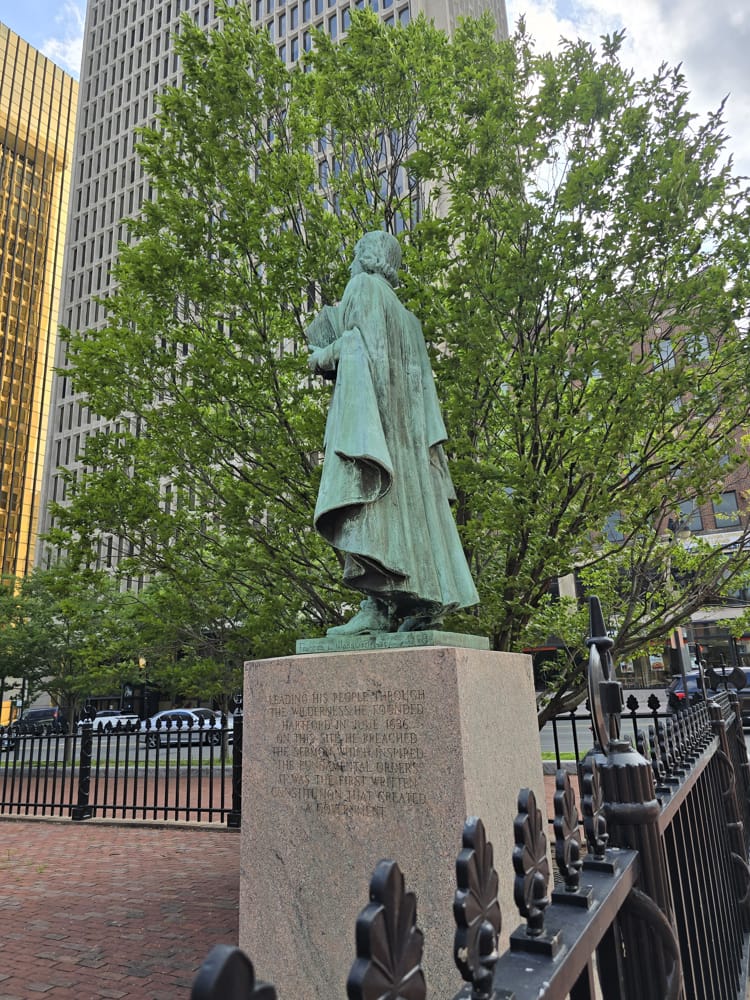
Thomas Hooker
The next one is even more impressive. Let me briefly review the end of the American Revolutionary War - in September 1781, the Continental Army and French forces besieged Yorktown, and after 3 weeks the British surrendered, marking victory in the American Revolutionary War. (Previously, on September 5, the British were defeated by the French in the Battle of the Chesapeake, losing naval superiority.) The Treaty of Paris was signed in 1783, formally recognizing American independence.
Going back in the timeline, in July 1780, French forces arrived at Newport, Rhode Island. In June 1781, the French began marching south to rendezvous with Continental forces at White Plains, New York, passing through New Jersey, Pennsylvania, Delaware, Maryland, and arriving in Virginia in September. The entire march route from Newport to Yorktown was named the Washington-Rochambeau Revolutionary Route. And in Hartford, Washington and Rochambeau met for the first time. (Note that the meeting place wasn’t in this building, as this building didn’t exist yet.) During the meeting, the Marquis de Lafayette, the legendary figure who played key roles in both the American Revolution and French Revolution - “the Hero of Two Worlds” - served as translator for the two commanders.
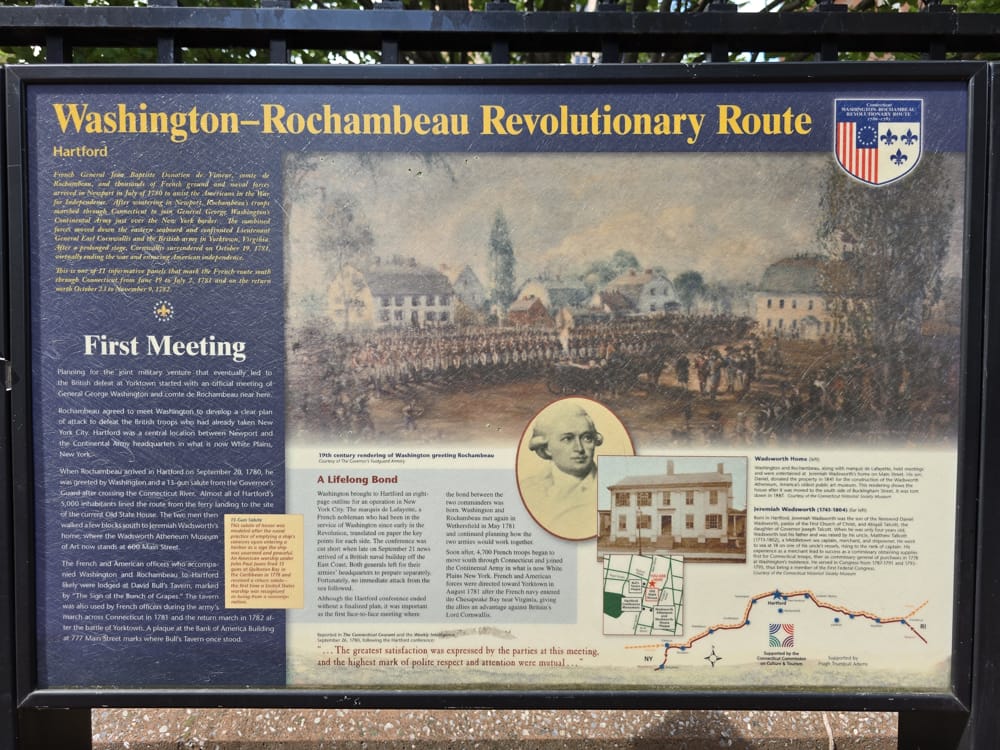
Washington meeting Rochambeau
43 years later in 1824, the Marquis de Lafayette visited America again, touring all 24 states at the time. On September 4, he returned to Hartford and met with the Governor of Connecticut at this location.
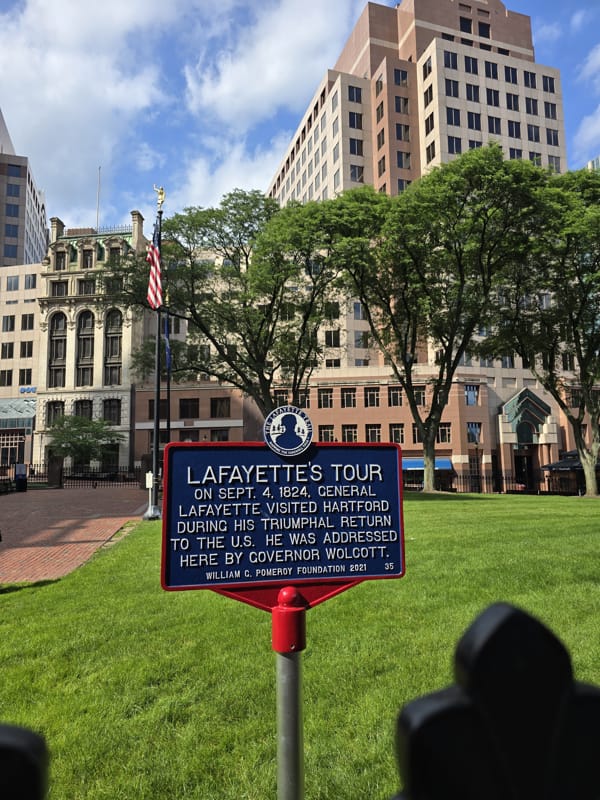
Marquis de Lafayette's return visit to Hartford
Here is the video for the Hartford stop from The Lafayette Trail:
Bushnell Park
Next stop was Bushnell Park in the city center, which still has many stories to share. Let me organize them chronologically from early to late:
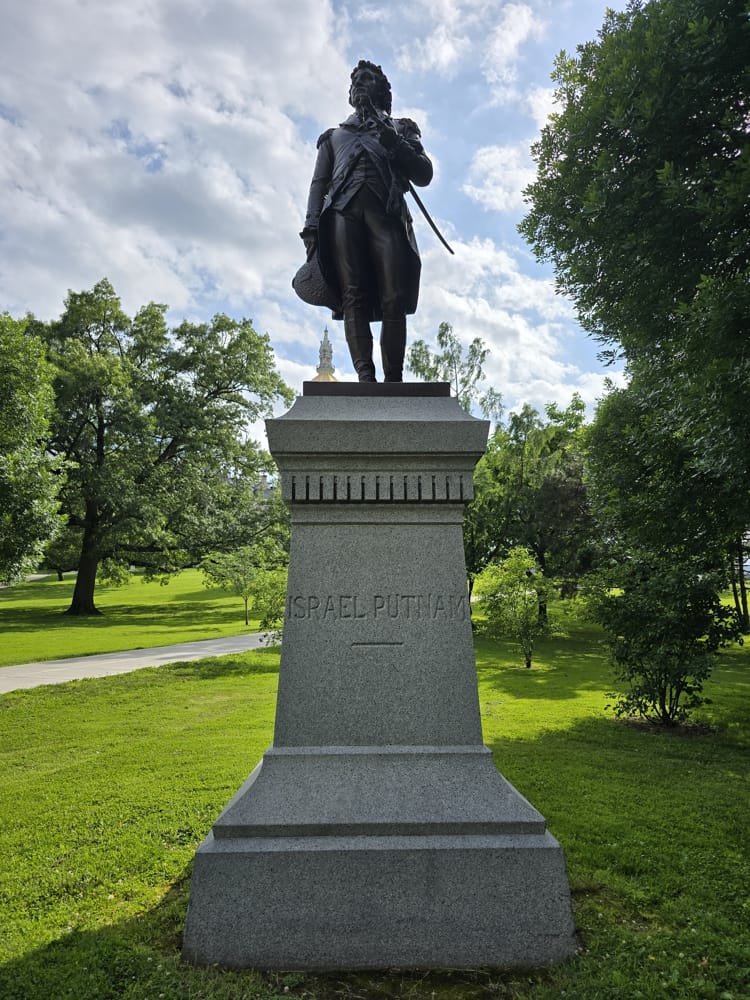
Putnam statue
Israel Putnam, American Revolutionary War hero - Putnam County north of Westchester County is named after him. In April 1775, at age 57, after receiving news of the Battles of Lexington and Concord (the first shot of the American Revolutionary War), he rode 18 hours straight to Cambridge, Massachusetts to join the independence cause. In June at the Battle of Bunker Hill, he allegedly gave the famous command “don’t fire until you see the whites of their eyes” to prevent inexperienced North American militia from wasting ammunition by firing beyond musket range.
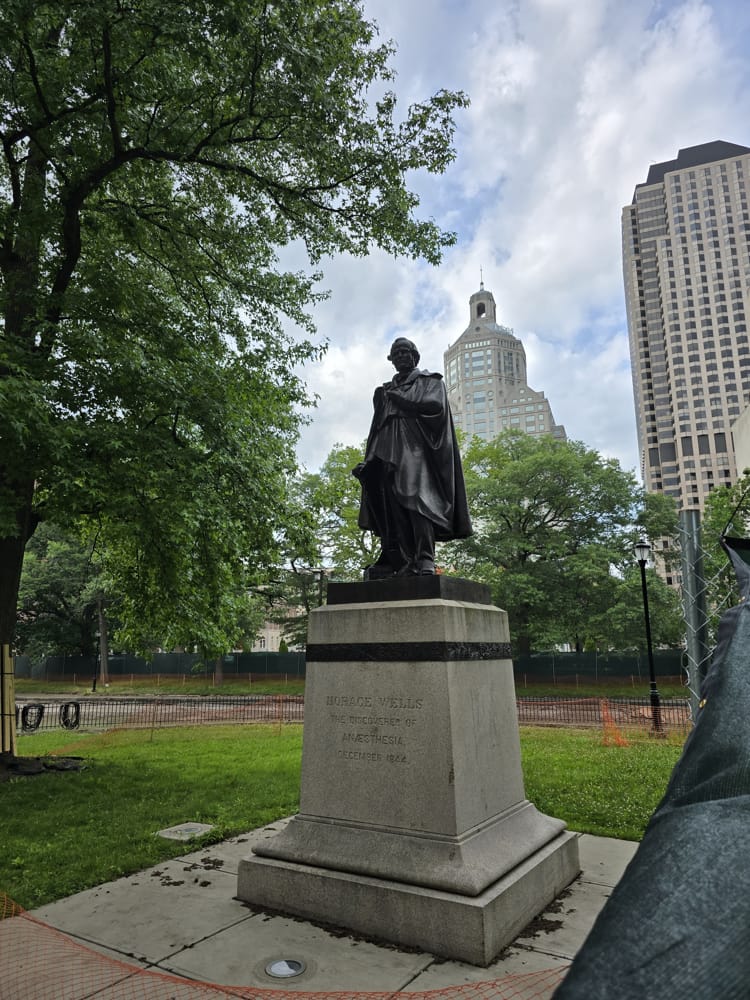
Dr. Wells statue
Horace Wells was a local dentist who interestingly was born in Hartford, Vermont (named after Hartford, Connecticut). In December 1844, he witnessed a nitrous oxide (laughing gas) demonstration and realized it could potentially be used as an anesthetic in dental surgery. The next day he inhaled laughing gas and had his colleague extract his tooth - he felt no pain. Experimenting on himself - truly admirable. In January 1845, he demonstrated the use of laughing gas to medical students in Boston, but the demonstration failed and the patient screamed in pain. Afterward, he was greatly affected and his mental state became unstable. By late 1845, he stopped practicing dentistry and switched to selling bathtubs. That’s quite a sharp career turn. He committed suicide in 1848 at age 33. In 1864, the American Dental Association recognized Wells as the discoverer of anesthesia. Alas, a sad story.
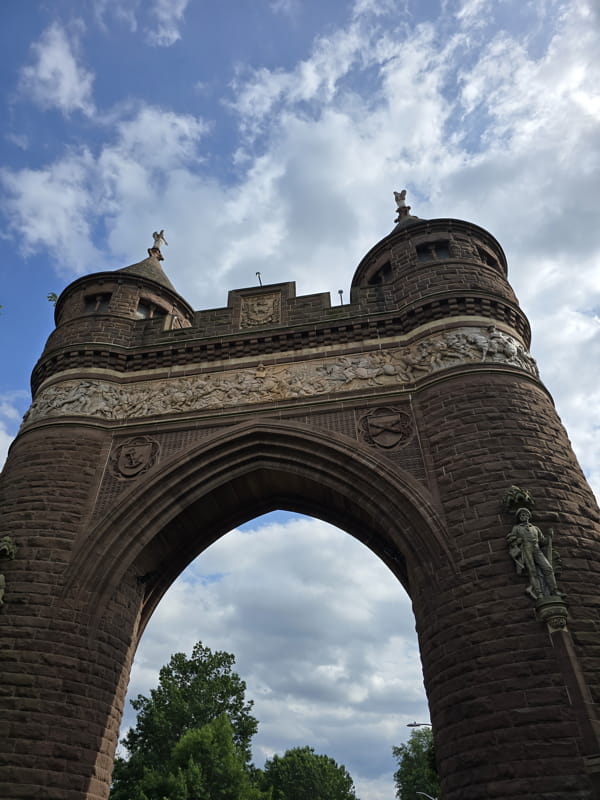
Soldiers and Sailors Memorial Arch
Soldiers and Sailors Memorial Arch, commemorating the four thousand Hartford citizens who served in the American Civil War (1861-1865), four hundred of whom died.
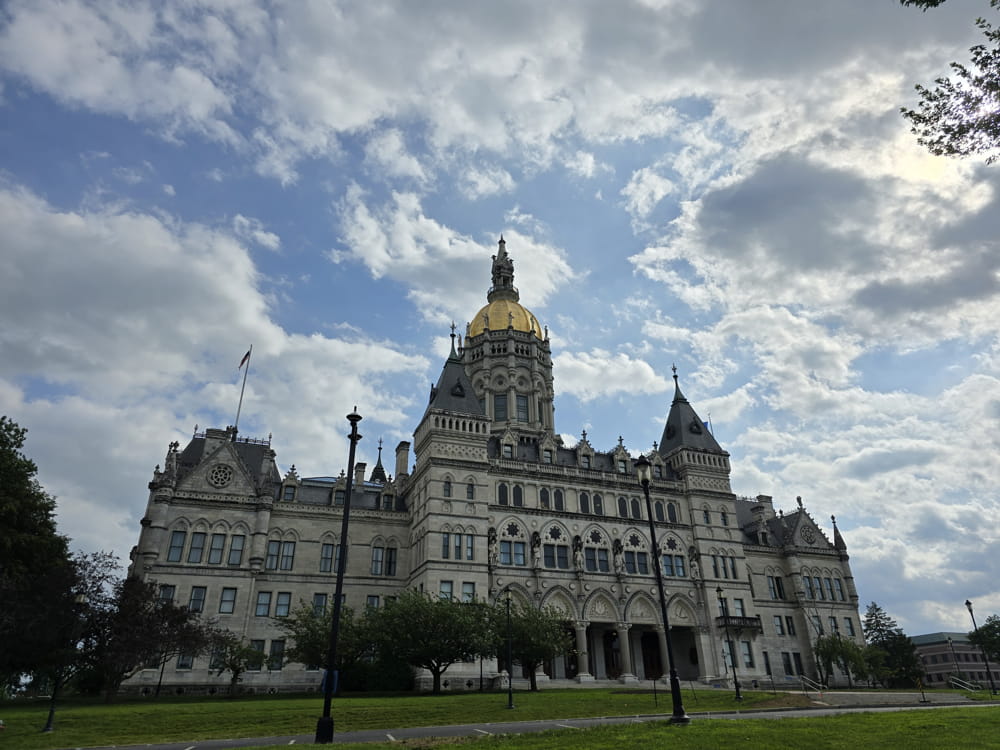
State Capitol
In 1879, the state legislature moved from the old building above to a much more luxurious new location.
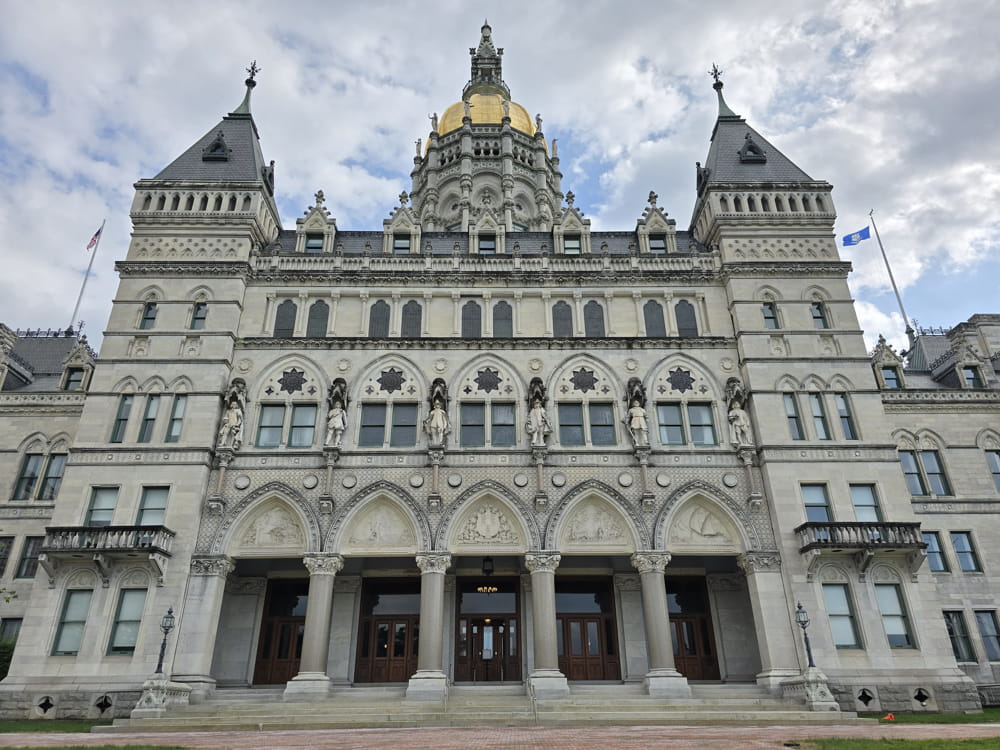
State Capitol front view
Looking carefully at the front, there are many statues, presumably all important figures in state history.
Conclusion
A casual half-day trip that, after researching online, turned out to involve so many people and events. Unexpectedly became a deep dive. Rich in history, some stories rather heavy. To end on a lighter note, the biggest highlight of Bushnell Park is a carousel built in 1914 - over a hundred years old and still bringing joy to children.
